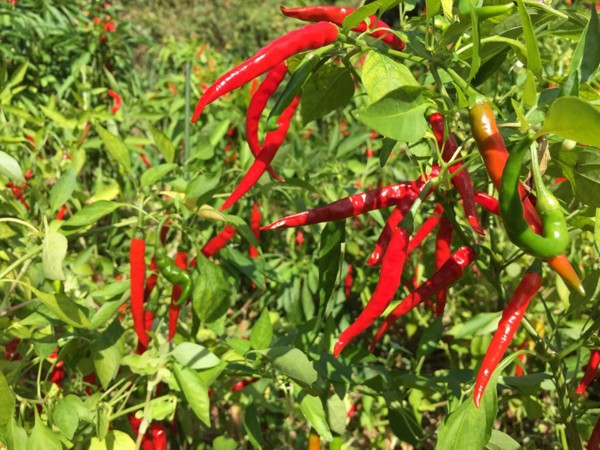It was in the middle of a family conversation when the idea hit me. My aunt, a retired teacher, had been lamenting how food prices were skyrocketing. She casually mentioned how expensive peppers had become, and that’s when I thought, “Why not start a pepper business?” After all, peppers are a staple in nearly every Nigerian dish.
Like most people, I wasn’t sure where to begin. However, through research, personal experience, and some trial and error, I discovered the steps that anyone could follow to set up a successful pepper business in Nigeria. Whether you want to start small or dream big, this step-by-step guide will walk you through everything you need to know.
Step 1: Research and Choose a Niche
The first step is to determine the specific aspect of the pepper business you want to focus on. There are several niches, such as:
- Selling fresh pepper at local markets.
- Processing dried or ground pepper for sale.
- Supplying peppers to restaurants and bulk buyers.
For me, I decided to focus on fresh and ground pepper production. I wanted to cater to both households and small businesses like restaurants. To do this effectively, I had to research which types of peppers were most in demand (tatase, shombo, rodo) and their pricing in different seasons.
Tip: Check local markets and online forums to understand pepper demand. Platforms like AgricLink and Nairaland can give insights into trends in agriculture and pepper pricing.
Step 2: Create a Business Plan
A business plan is essential in any business venture, and pepper farming is no different. My initial plan included:
- The total capital needed.
- Equipment required, like grinding machines or drying equipment.
- Marketing strategy, such as using social media to promote the business.
- Profit projections, including sales and potential clients.
For example, I calculated that with an initial investment of N100,000, I could rent a small farmland, buy seedlings, and market my business through digital platforms. Having this roadmap guided me through the entire setup.
Tip: Financial literacy is key. Make sure you budget for operational costs like farm labor, fertilizers, and logistics.
Step 3: Acquire Land or Start with Pepper Trading
If you plan to grow peppers, securing farmland is your next step. Many Nigerian states, like Oyo, Ogun, and Kaduna, are ideal for pepper cultivation due to their favorable climate. You don’t need to buy land outright if you’re low on capital; you can lease farmland.
For those who don’t want to go into farming, you can start by purchasing peppers from local farmers and selling them at markets or online. I began by doing both: growing a small quantity of peppers on leased land while also buying from farmers in neighboring villages to supplement my supply.
Tip: Use online resources like PropertyPro to find affordable farmland to lease. Alternatively, you can join cooperative societies that lease land at discounted rates.
Step 4: Register Your Business
To build credibility and gain trust, it’s essential to register your business with the Corporate Affairs Commission (CAC) in Nigeria. This not only makes your business official but also allows you to open a business bank account and access grants or loans targeted at agriculture.
Registering also enables you to benefit from government schemes aimed at supporting agricultural businesses, such as the Central Bank of Nigeria's Anchor Borrowers' Programme.
Tip: The registration process can be completed online via the CAC website, and it’s relatively affordable.
Step 5: Source for Quality Seeds
Good-quality seeds will determine the success of your pepper farming. You want seeds that are disease-resistant and have a high yield. In my case, I partnered with a local agricultural extension officer who helped me source quality seeds from a certified supplier. This move saved me time and money in the long run because poor-quality seeds could have ruined my first harvest.
If you're buying from local farmers, ensure that the peppers are fresh and in good condition, as this will affect your sales.
Tip: You can source seeds from reliable suppliers or research agritech companies like ThriveAgric, which offer seed financing and quality supplies to farmers.
Step 6: Farm Management and Harvesting
Once your seeds are planted, managing your farm is crucial. You’ll need to ensure your plants get enough water, and nutrients, and are protected from pests. Regular weeding and applying organic fertilizer significantly boosted my crop’s yield. I invested in a simple irrigation system, which helped during dry seasons.
I also learned that timing is everything when harvesting peppers. You need to harvest when they are ripe but still firm. If you wait too long, they become overripe and spoil quickly.
Tip: Hire part-time laborers to assist with weeding and watering during peak periods. Their expertise will ensure you get the most from your crops.
Step 7: Packaging and Branding
Packaging plays a huge role in pepper marketing. I invested in good packaging materials for my ground pepper and fresh produce. I designed simple but attractive labels and used clear plastic containers for my ground pepper. For fresh peppers, I sold in both small and large quantities, packaging in sacks for bulk buyers and baskets for retailers.
Branding also involved creating a business name and logo. Since I was selling online as well, I made sure to create a cohesive brand that reflected quality and freshness.
Tip: You can find affordable packaging materials on sites like Jumia or Alibaba. Use Canva to design labels, and ensure your packaging is neat and professional.
Step 8: Market Your Pepper Business
Marketing was where I saw the most growth. I made use of both traditional and digital marketing methods. Initially, I sold my peppers at local markets and to food vendors in my area. But the game-changer was taking my business online.
Here’s how I marketed my pepper business digitally:
- Social Media: I used Instagram and Facebook to showcase my products, particularly the packaging and fresh peppers. Using hashtags like #FreshPepperNG helped attract customers.
- WhatsApp: I joined local farming groups and food vendor groups where I shared my products and connected with potential buyers.
- E-commerce: I set up a simple store on Jumia to sell my ground pepper in small packs. I also explored bulk sales to supermarkets.
Tip: Invest in running social media ads, targeting people in food production, restaurants, and even supermarkets. Platforms like Paystack make receiving payments online easier.
Step 9: Reinvest and Scale Up
Once I saw consistent sales, I reinvested a portion of my profits into the business. This allowed me to expand my farm, buy more seeds, and hire more workers. I also bought more grinding machines, which enabled me to process more ground pepper, increasing my product range.
Scaling up also included reaching out to more bulk buyers and retailers. Today, my pepper business continues to grow, with consistent reinvestment in both production and marketing.


.jpg)





.webp)






(0) Comment(s)
Write a comment